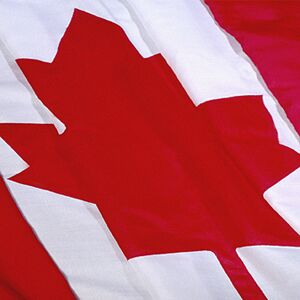
Canada’s Recession: Over?
Canada is well-positioned to weather the economic storm. So say Bay Street analysts and their popular media lackeys. But they are gravely mistaken. Instead of awakening the nation, they are singing it to sleep—into a fitful nightmare. And then, a most rude awakening.
The Bank of Canada governor, Mark Carney, admitted that the entire world is facing a “profound restructuring.” He added: “Make no mistake: What will be required of our businesses, of policymakers and Canadians will be quite historic. This has been a great recession … it is bringing a big restructuring and will require major adjustment in this country.”
Yet Canadians shouldn’t worry, Mr. Carney proclaims. The worst is over! The labor market is more resilient than the recession is cancerous.
Canada is on the path back to the good times. Consider the recession over.
But the proof is missing in action.
Just like Canada’s gross domestic product. June ended 10 months of consecutive economic decline. The economy supposedly grew 0.1 percent that month. That’s not much, but it was considered enough to say that the economy had turned the corner. Then came July, and the economy fell back flat. July’s zero-percent growth rate shocked analysts, who had been predicting a “strong” 0.4 percent expansion.
But here is why July’s zero growth is especially bad. What gdp actually measures is spending within the economy. Spending fueled by savings and income is one thing, but when that spending is borrowed money, gdp starts to lose its merit as an indicator of healthy economic activity. It really loses its merit as an economic indicator when you realize that much of the government’s borrowed stimulus was spent in grants to upgrade hockey rinks, tennis courts and theaters, and to subsidize home renovations and other private projects that homeowners had to do anyway.
And amazingly, despite the fact that the Canadian government massively blew out its budget to stimulate the economy and pump up the gdp, the economy still refuses to grow.
Canada’s gdp is around $1.3 trillion. To prop up the economy, the federal government will borrow $56 billion—producing the largest annual deficit in Canadian history. That means 4.5 percent of the economy only exists due to one-time government borrowing. That 4.5 percent of the economy won’t be there next year unless the government borrows more.
Ontario, Canada’s largest province, is also doing its best to inflate the gdp with debt. Ontario is on track to spend $25 billion more than it takes in from taxes. This borrowed, unsustainable spending, much of it from foreigners, contributes almost another 2 percent of phony gdp.
Then there is all the debt-masquerading gdp from Canada’s next-biggest provinces of British Columbia, Alberta and Quebec.
The debt-pumped gdp picture is even worse when you realize that the gdp number is already vastly overstated due to double-counting. Gross domestic product is defined as private consumption plus gross investment plus government spending plus exports minus imports. The problem is that it is impossible to have investment without consumption. For example, workers building a factory are paid salaries. This money is tabulated under gross investment in the gdp number. But those same workers spend their wages on food, clothes, cars, etc., which is counted as private consumption. Thus the gdp paints a picture of an economy much larger than reality.
The other number recently quoted as proof that the recession is over is the unemployment rate, which fell by 0.3 percent to 8.4 percent in September.
A falling unemployment rate is positive, but unfortunately, a closer look at this number also reveals a less-rosy picture. “At the center of every hurricane, there is a small area, often referred to as the eye of the storm, where the weather seems to be calm, the sky appears to be clear, and the winds are just light breezes. That’s where we are now,” says Canadian Labor Congress senior economist Sylvain Schetagnes. “The storm might appear to be clearing up, however, the decrease in unemployment rate hides the fact that 24,500 Canadians left the labor market last month.” If you add these discouraged workers back in, the unemployment rate heads back to where it was last month.
Additionally, it was revealed that during September, the government hired 36,400 new workers. Since there was only a total of 31,000 net jobs created that month, that means the private sector actually shed jobs. The result is that there are now fewer tax-paying private sector workers left to support the increased number of government employees. The burden on the most productive sector of the economy has actually increased.
A realistic look at the numbers reveals a nation in much worse shape than the statistics might seem to indicate. Whether you look at real gdp (down), real employment (down), or other indicators like the value of good in transit (down), total investment in machinery (down), or loan defaults (up)—the prognosis is not good.
And conditions are about to get far worse. The United States is Canada’s largest foreign market (Canada is also America’s most important trade partner)—and that market is shriveling up. The most recent numbers in the United States are even worse than those in Canada. Last month, the U.S. economy lost an additional 263,000 jobs. Official U.S. unemployment now stands at 9.8 percent—and real unemployment (as measured by U6) is in the high teens.
Sadly, Canada is not remotely prepared for what it is about to wake up to. The economy continues to deteriorate, and debt levels continue to rise. Meanwhile, nothing has been fixed. As Bank of Canada governor Mark Carney says: A “profound restructuring” is heading Canada’s way. But contrary to his stated opinion, the worst is not over—it is just beginning.
